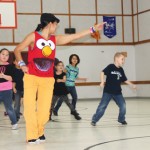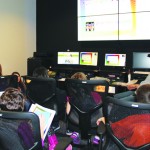By Lindsey Tanner, Associated Press
CHICAGO — Shootings and other traumatic events involving children are not rare events, but there’s a startling lack of scientific evidence on the best ways to help young survivors and witnesses heal, a government-funded analysis found.
School-based counseling treatments showed the most promise, but there’s no hard proof that anxiety drugs or other medication work and far more research is needed to provide solid answers, say the authors who reviewed 25 studies. Their report was sponsored by the federal Agency for Healthcare Research and Quality.
According to research cited in the report, about two-thirds of U.S. children and teens younger than 18 will experience at least one traumatic event, including shootings and other violence, car crashes and weather disasters. That includes survivors and witnesses of trauma. Most will not suffer any long-term psychological problems, but about 13 percent will develop symptoms of post-traumatic stress, including anxiety, behavior difficulties and other problems related to the event.
The report’s conclusions don’t mean that no treatment works. It’s just that no one knows which treatments are best, or if certain ones work better for some children but not others.
“Our findings serve as a call to action,” the researchers wrote in their analysis, published online Monday by the journal Pediatrics.
“This is a very important topic, just in light of recent events,” said lead author Valerie Forman-Hoffman, a researcher at the University of North Carolina-Chapel Hill.
She has two young children and said the results suggest that it’s likely one of them will experience some kind of trauma before reaching adulthood. “As a parent I want to know what works best,” the researcher said.
Besides the December massacre at Sandy Hook Elementary School in Connecticut, other recent tragedies involving young survivors or witnesses include the fatal shooting last month of a 15-year-old Chicago girl gunned down in front of a group of friends; Superstorm Sandy in October; and the 2011 Joplin, Mo., tornado, whose survivors include students whose high school was destroyed.
Some may do fine with no treatment; others will need some sort of counseling to help them cope.
Studying which treatments are most effective is difficult because so many things affect how a child or teen will fare emotionally after a traumatic event, said Dr. Denise Dowd, an emergency physician and research director at Children’s Mercy Hospitals and Clinics in Kansas City, Mo., who wrote a Pediatrics editorial.
One of the most important factors is how the child’s parents handle the aftermath, Dowd said.
“If the parent is freaking out” and has difficulty controlling emotions, kids will have a tougher time dealing with trauma. Traumatized kids need to feel like they’re in a safe and stable environment, and if their parents have trouble coping, “it’s going to be very difficult for the kid,” she said.
The researchers analyzed 25 studies of treatments that included anti-anxiety and depression drugs, school-based counseling, and various types of psychotherapy. The strongest evidence favored school-based treatments involving cognitive behavior therapy, which helps patients find ways to cope with disturbing thoughts and emotions, sometimes including talking repeatedly about their trauma.
This treatment worked better than nothing, but more research is needed comparing it with alternatives, the report says.
“We really don’t have a gold standard treatment right now,” said William Copeland, a psychologist and researcher at Duke University Medical Center who was not involved in the report. A lot of doctors and therapists may be “patching together a little bit of this and a little bit of that, and that might not add up to the most effective treatment for any given child,” he said.







